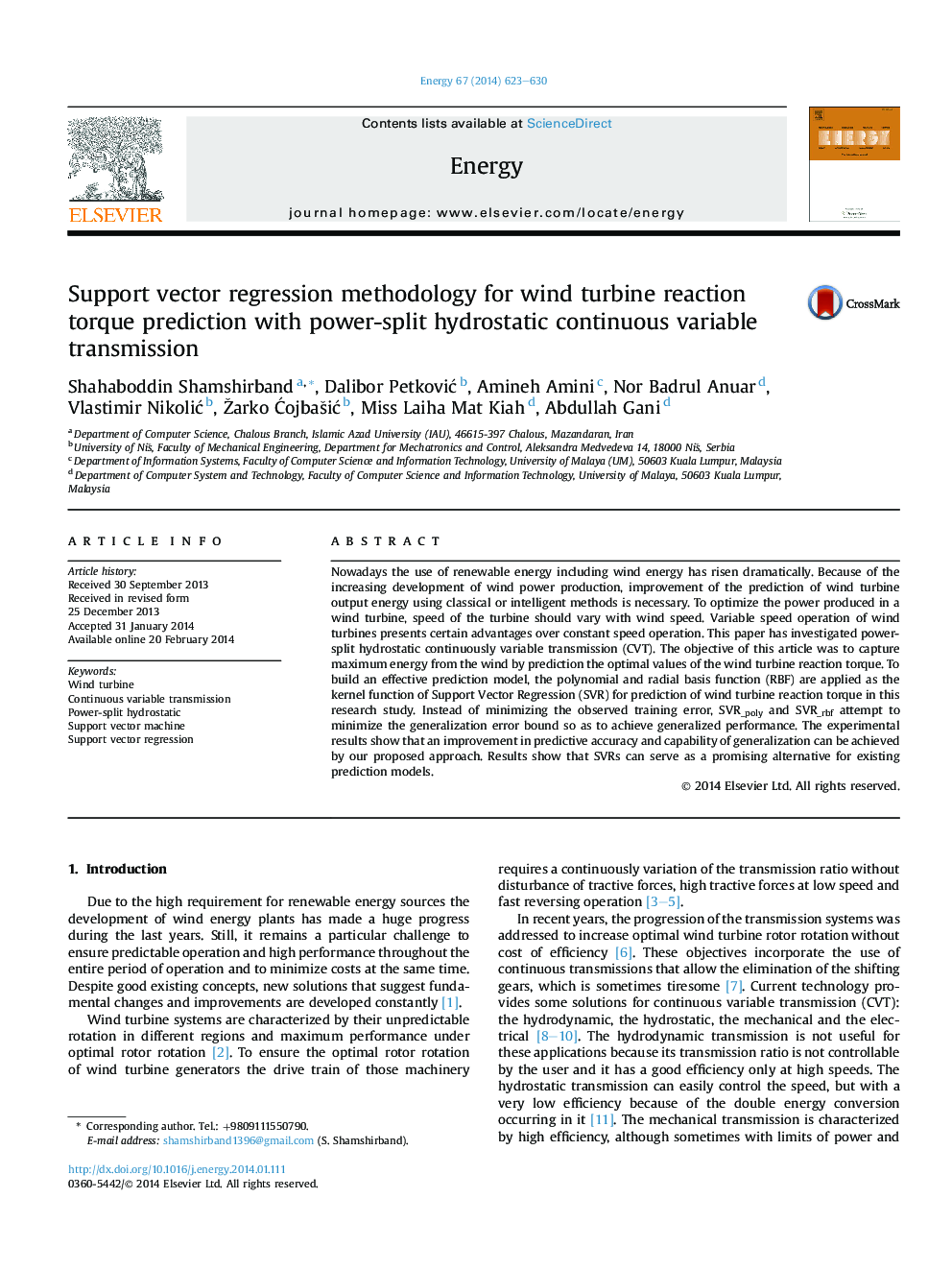| Article ID | Journal | Published Year | Pages | File Type |
|---|---|---|---|---|
| 1732592 | Energy | 2014 | 8 Pages |
•Variable speed operation of wind turbine to increase power generation.•Wind turbine speed should vary with the wind speed fluctuation.•The optimal values prediction of the wind turbine reaction torque.•The polynomial and radial basis function to build an effective prediction model.•An improvement in predictive accuracy and capability of generalization.
Nowadays the use of renewable energy including wind energy has risen dramatically. Because of the increasing development of wind power production, improvement of the prediction of wind turbine output energy using classical or intelligent methods is necessary. To optimize the power produced in a wind turbine, speed of the turbine should vary with wind speed. Variable speed operation of wind turbines presents certain advantages over constant speed operation. This paper has investigated power-split hydrostatic continuously variable transmission (CVT). The objective of this article was to capture maximum energy from the wind by prediction the optimal values of the wind turbine reaction torque. To build an effective prediction model, the polynomial and radial basis function (RBF) are applied as the kernel function of Support Vector Regression (SVR) for prediction of wind turbine reaction torque in this research study. Instead of minimizing the observed training error, SVR_poly and SVR_rbf attempt to minimize the generalization error bound so as to achieve generalized performance. The experimental results show that an improvement in predictive accuracy and capability of generalization can be achieved by our proposed approach. Results show that SVRs can serve as a promising alternative for existing prediction models.
